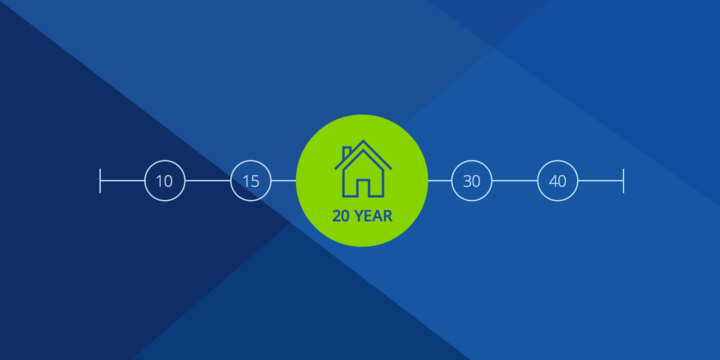What Is a Mortgage Principal? Principal Payment Explained


Written by Tali Bendzak on February 10, 2023
When you make a payment on a mortgage you’re putting money towards two main components: principal and interest. The mortgage principal is the original amount of money you borrow for your home, while interest is a percentage of the principal balance that you pay to the lender for borrowing the money. As you pay down the principal on a mortgage, the loan balance reflects the total amount of principal that remains outstanding.
Depending on the type of mortgage you have, you may have as few as 10 years or as long as 30 years to repay the principal. The most common length of time a borrower has to repay their mortgage in full is 30 years. You can usually make extra principal payments to reduce the number of years it takes to repay the loan, which can save you money on interest payments.
How much of a mortgage payment is principal
Mortgage principal is calculated by subtracting the down payment from the total purchase price. If you use a mortgage to purchase a $300,000 home with a 10% down payment ($30,000), that means your principal is $270,000. You’ll pay interest on this total principal balance, and both the interest and principal will get divided into equal monthly payments.
For example, if your principal on a 30-year mortgage is $270,000 and you have a fixed interest rate of 6.5%, your estimated total interest over 30 years would be $344,373. That means you would pay a total of $614,373 in principal and interest on the loan. You can use our mortgage amortization calculator to estimate the total principal and interest you’ll pay over the life of your home loan.
Below is an estimate of what a monthly interest and principal payment would look like, using this same example:
| Month | Principal owed | Interest owed | Total monthly payment |
|---|---|---|---|
| January | $244 | $1,463 | $1,707 |
*Note: if your mortgage has a fixed interest rate, your interest payments will stay the same. If you have an adjustable-rate mortgage, your interest payments may go up or down. Your mortgage payment may also include tax and insurance fees.
What is the outstanding mortgage principal?
The outstanding loan balance is the total amount of your principal that remains unpaid after each monthly payment. The balance does not reflect the amount you’ll still need to pay toward interest.
How to pay down principal on a mortgage
As you gradually pay off your debt, a smaller portion of your payment will go towards interest and a larger portion will go towards paying down your principal through a process known as amortization. In the early years of your loan, your outstanding mortgage balance typically doesn’t decrease much despite making regular monthly payments. Here’s why: during this time, the majority of your payment will go toward interest, not principal.
Let’s look at an example. If the principal on a 30-year fixed-rate mortgage is $270,000, and you pay $244 in principal in the first month, your principal loan balance after your payment will be $269,756. If you owe 6.5% in interest, in addition you’ll pay $1,463 in interest in the first month to your lender, which won’t change your principal loan balance. As you pay down your loan each month, a little more of your monthly payment will go toward your principal and a little less of your payment will go toward interest.
| Month | Principal payment | Interest payment | Principal loan balance |
|---|---|---|---|
| January | $244 | $1,463 | $269,756 |
| February | $245 | $1,461 | $269,511 |
| March | $247 | $1,460 | $269,264 |
| April | $248 | $1,459 | $269,016 |
| May | $249 | $1,457 | $268,766 |
What if I pay extra on my mortgage?
If you have additional money available that you want to apply to your loan balance, making an extra principal-only payment is the best way to pay down your principal. Most lenders allow extra principal payments, as long as you’re also staying current with your full monthly payment. Your loan servicer can help you set up principal-only payments. Note, that if you have an interest-only loan or adjustable-rate mortgage (ARM), there may be restrictions on if and when you can make extra principal payments. Check with your lender to confirm principal-only payments are accepted first.
Here are a few ways to “curtail” or lower your principal balance more quickly.
- Make an extra principal payment each month.
- Make bi-weekly principal payments to cut your loan repayment time in half.
- Make a one-time, lump sum principal payment whenever your budget allows.
- Refinance to a lower interest rate to lower your monthly payments and redirect some of the money you’d use to pay interest into your principal instead.
Today, a lot of mortgage lenders offer online payment portals where you can make additional principal payments. If online payments aren’t an option, you may be able to submit your payments over the phone, in-person or by mail. Check with your loan servicer to confirm which options are available. When paying extra on a mortgage, specify that you want the payment to be applied to your principal, not interest.
Is it better to pay interest or principal on a loan?
Paying off your principal balance should always be the goal. Making an interest-only payment doesn’t decrease the amount of money you owe on a loan, but paying down your principal will lower your principal loan balance. The faster you pay down your principal, the less interest you’ll pay overall and the sooner you’ll be able to pay off your loan.
Here is a look at the potential benefits of making extra principal payments on a $270,000, 30-year fixed-rate mortgage with a 6.5% interest rate.
Paying an additional $50 each month can reduce the 30-year loan term by 2 years and 5 months and save you $33,206 that would end up getting lost to interest. Increasing that extra payment to $200 each month can reduce your loan term by almost 8 years and save you over $100,000 in interest — allowing you to repay a 30-year loan in just 22 years.
| Extra monthly principal payment | Total money saved from interest | Repayment time reduced |
|---|---|---|
| $50 | $33,206 | 2 years, 5 months |
| $100 | $59,790 | 4 years, 5 months |
| $200 | $100,122 | 7 years, 6 months |
What else is included in a mortgage payment?
In addition to paying principal and interest each month, most loan servicers will lump your monthly property taxes and homeowners insurance premiums into your payment. The funds you pay for these go into an escrow account, which your loan servicer will use to pay your tax and insurance bills on your behalf. All together, your combined monthly payment is commonly called your PITI, because it includes your principal, interest, taxes and insurance payments. Zillow’s mortgage calculator can help you figure out your total monthly costs, including principal, interest, property taxes and insurance.
How to get a principal reduction on a mortgage
If you’re having trouble making your monthly mortgage payments and are at risk of foreclosure, your lender may allow you to do a principal reduction as an alternative to foreclosure.
Principal reduction is a decrease in the amount owed on a mortgage. While many of the principal reduction programs that were common during the 2008 recession have expired, the federal Making Home Affordable program is still active. Ask your lender about other forms of financial relief, such as a reduced interest rate or extending the terms of the loan to lower your monthly mortgage payments and increase your ability to pay.
How much home can you afford?
At Zillow Home Loans, we can pre-qualify you in as little as 5 minutes, with no impact to your credit score.
Zillow Home Loans, NMLS # 10287. Equal Housing Lender
Get pre-qualifiedHow much home can you afford?
See what's in reach with low down payment options, no hidden fees and step-by-step guidance from us at
Zillow Home Loans.
Zillow Home Loans, NMLS # 10287. Equal Housing Lender
Calculate your BuyAbility℠



